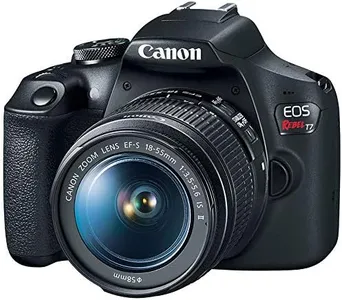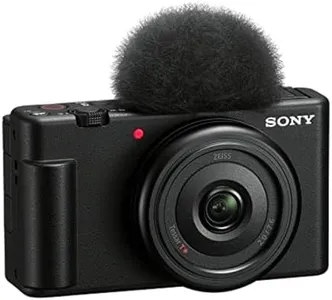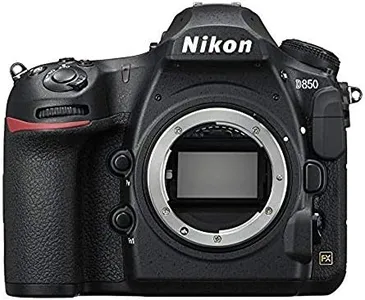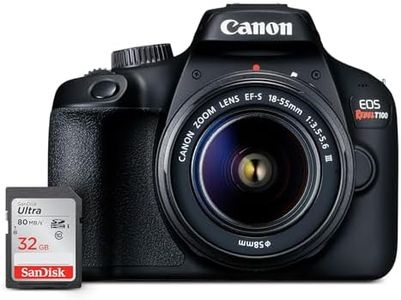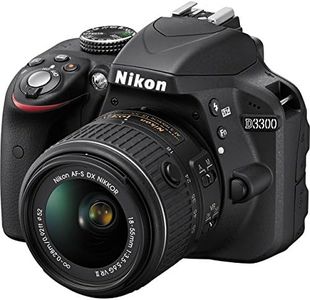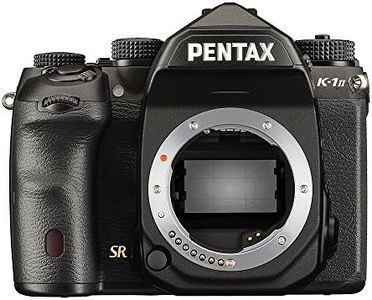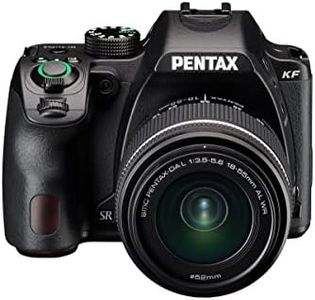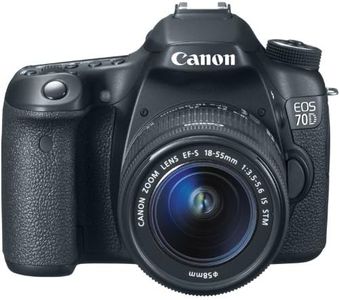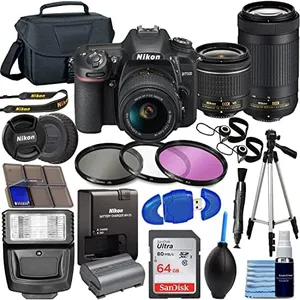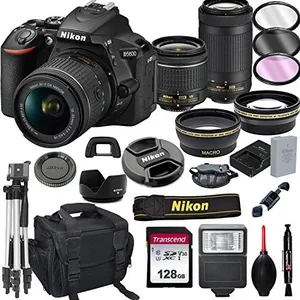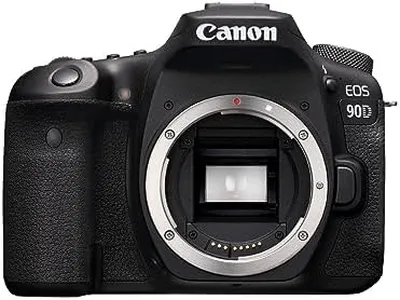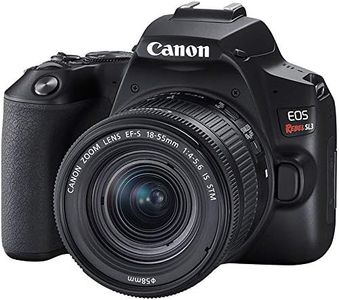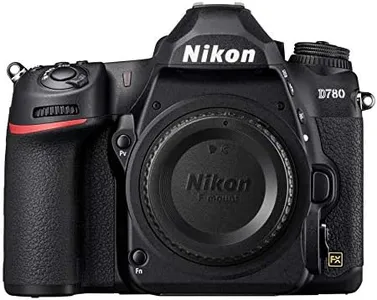10 Best Dslr Cameras 2025 in the United States
Our technology thoroughly searches through the online shopping world, reviewing hundreds of sites. We then process and analyze this information, updating in real-time to bring you the latest top-rated products. This way, you always get the best and most current options available.

Our Top Picks
Winner
Canon EOS Rebel T7 DSLR Camera with 18-55mm Lens | Built-in Wi-Fi | 24.1 MP CMOS Sensor | DIGIC 4+ Image Processor and Full HD Videos
Most important from
4913 reviews
The Canon EOS Rebel T7 is a solid entry-level DSLR camera that caters well to beginner photographers and those looking to step up from smartphone photography. With its 24.1 Megapixel APS-C CMOS sensor, it captures sharp images with decent detail, making it suitable for everything from casual family photos to beginner landscape shots. The ISO range of 100-6400 (expandable to 12800) allows for versatility in various lighting conditions, although performance at higher ISO settings might introduce some noise.
One of the standout features of the T7 is its built-in Wi-Fi and NFC capabilities, which make sharing photos easy and convenient. The camera's 9-point autofocus system is straightforward, enabling users to focus on subjects effectively, though professional photographers may find it a bit limiting compared to models with more advanced autofocus systems.
The optical viewfinder provides about 95% coverage, which is standard for cameras in this class, but it may present some challenges in precise framing. The camera supports Full HD video, which is great for casual video recording, but it does lack 4K capability, which might be a drawback for those wanting to create high-resolution video content. In terms of build quality, the T7 feels sturdy, yet it remains lightweight and easy to handle, making it a good choice for extended shooting sessions. Lens compatibility is also a strength, as it accepts a wide variety of Canon EF lenses, offering flexibility for future upgrades.
Most important from
4913 reviews
Sony ZV-1F Vlog Camera for Content Creators and Vloggers Black
Most important from
1188 reviews
The Sony ZV-1F Vlog Camera is designed with content creators and vloggers in mind. One of its standout features is its ultra-wide 20mm lens, which allows users to capture wide-angle shots even when holding the camera at arm's length. This is particularly useful for vloggers who need to include more background in their videos. The camera's large 1-inch sensor and F2 aperture lens are excellent for low-light conditions and creating a beautiful, defocused background effect, making subjects stand out clearly in videos and photos.
The Eye-AF and autofocus tracking technology ensure that subjects remain sharp and in focus, which is essential for dynamic shooting environments. The side-articulating touchscreen LCD is user-friendly for selfie shots and vlogging, adding to the camera's versatility. Audio quality is enhanced with a directional 3-capsule mic and wind screen accessory, ensuring clear voice recordings even in windy conditions. On the downside, the camera features digital image stabilization rather than optical, which may not be as effective in reducing camera shake during handheld shooting.
The camera is also lightweight and compact, which is great for portability, but might not offer the robust build quality some users expect from higher-end DSLR cameras. The Sony ZV-1F is an excellent choice for vloggers and content creators looking for a user-friendly, portable camera with strong video capabilities and good low-light performance, though it may fall short for those needing advanced stabilization.
Most important from
1188 reviews
Canon EOS 5D Mark IV Digital SLR Camera (Body Only), Full-Frame DSLR Camera, 30.4 Megapixel CMOS Sensor, 4K Video, Content Creator Camera, EF Mount, Black
Most important from
965 reviews
The Canon EOS 5D Mark IV is a full-frame DSLR that stands out for its impressive 30.4-megapixel sensor, delivering sharp images even in low-light conditions thanks to its ISO range of 100-32,000, which can be expanded to 50-102,400. This camera is particularly appealing for content creators and serious photographers who value video capabilities, as it can shoot 4K video at 30 or 24 frames per second and offers various other video resolutions and frame rates. Its fast DIGIC 6+ image processor enhances performance, allowing up to 7 frames per second continuous shooting, ideal for capturing action shots.
One of the notable strengths is its advanced autofocus system, featuring 61 autofocus points with Dual Pixel CMOS AF, which allows for smooth focus transitions in both video and still photography. The camera also includes a touch-sensitive LCD screen, facilitating easier navigation and focus selection.
There are some drawbacks to consider. While it’s built to last, the camera body is relatively heavier compared to some other models, which might be a concern for those looking for portability. Additionally, the absence of in-body image stabilization could limit handheld shooting options, especially under challenging conditions. This camera is designed for more serious photography and videography, which might come with a steeper learning curve for beginners. The camera's lens compatibility with the Canon EF and EF-S series opens a wide range of shooting possibilities, making it a versatile choice for various photography styles. With its robust feature set and excellent image quality, the Canon EOS 5D Mark IV is particularly well-suited for professional photographers and videographers looking to elevate their craft.
Most important from
965 reviews
Buying Guide for the Best Dslr Cameras
Choosing the right DSLR camera can be a daunting task, but with a little guidance, you can find the perfect fit for your needs. The key is to understand the various specifications and how they align with your photography goals. Whether you're a beginner looking to explore photography or a professional seeking advanced features, knowing what to look for will help you make an informed decision.FAQ
Most Popular Categories Right Now
